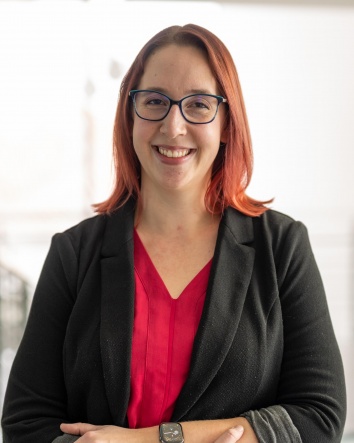
Caroline Morley is one of 20 scientists selected for the first year of the Scialog: Early Science with the LSST award.
20 February 2025
UT Austin’s Caroline Morley is among the prestigious group of astronomers selected by Research Corporation for Science Advancement (RCSA) for the first year of its Scialog: Early Science with the LSST award. This is a three-year initiative that aims to advance the foundational science needed to realize the full potential of the Vera C. Rubin Observatory’s upcoming Legacy Survey of Space and Time.
RCSA will make 21 separate awards to support the research of 20 scientists on eight, cross-disciplinary teams from colleges, universities, and research institutions in the United States and Canada.
Morley and fellow astronomer Kareem El-Badry of California Institute of Technology are one of these teams, which was selected to research white and brown dwarfs (White Dwarf Companions as Brown Dwarf Chronometers).
“I love that astronomy feels like it's moving so quickly, with rapid new discoveries right now,” said Morley. “With new facilities like the Rubin Observatory coming online - which will enable this project with Kareem - there's always a new way to explore the universe.”
Scialog is short for “science + dialog.” Created in 2010 by RCSA, the Scialog format aims to accelerate breakthroughs by building a creative network of scientists that crosses disciplinary silos, and by stimulating intensive conversation around a scientific theme of global importance.
One such networking opportunity was the Scialog: Early Science with the LSST inaugural conference, held November 14-17. It engaged more than 50 observational astronomers, cosmologists, theoretical physicists and astrophysicists, computational modelers, data scientists, and software engineers from the U.S., Canada, and Chile in a series of conversations designed to build a networked community, discuss challenges and gaps in current knowledge, and form teams (like Morley and El-Badry’s) to propose blue-sky projects based on ideas generated during the conference.
“I have never worked with Kareem before, and we would never have come up with our idea without the Scialog meeting,” said Morley. “I really had to think outside the boundaries of my normal research at this meeting, which is always fun.”
With technical first light on the Rubin Observatory LSST Camera (the world’s largest digital camera) expected by early June 2025, full operations could start in September or October 2025. The first data preview should be available to researchers in March 2025, and the second in March 2026.
In time, the Rubin Observatory will be able to survey the entire sky in only three nights and is expected to generate more than 20 terabytes of data each night, amassing a set of data and images that could address some of the deepest questions about the universe, its evolution, and the objects within it.
Based on a news release from the Research Corporation for Science Advancement. The Heising-Simons Foundation, The Brinson Foundation, the Leinweber Foundation, and independent philanthropist Kevin Wells are providing support to RCSA to fund the work of the eight cross-disciplinary teams.

Caroline Morley is one of 20 scientists selected for the first year of the Scialog: Early Science with the LSST award.